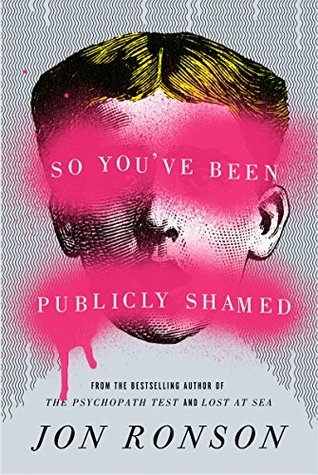More on this book
Community
Kindle Notes & Highlights
suppose that when shamings are delivered like remotely administered drone strikes nobody needs to think about how ferocious our collective power might be. The snowflake never needs to feel responsible for the avalanche.
You remain with the person you’ve just been yelling at until the resentments fizzle. That’s how wounds heal.
turned out from his survey that 91 percent of men and 84 percent of women had experienced “at least one vivid fantasy of killing someone.”
Shame internalized can lead to agony. It can lead to Jonah Lehrer. Whereas shame let out can lead to freedom, or at least to a funny story, which is a sort of freedom too.
I think we all care deeply about things that seem totally inconsequential to other people. We all carry around with us the flotsam and jetsam of perceived humiliations that actually mean nothing. We are a mass of vulnerabilities, and who knows what will trigger them?
“The way we construct consciousness is to tell the story of ourselves to ourselves, the story of who we believe we are. I feel that a really public shaming or humiliation is a conflict between the person trying to write his own narrative and society trying to write a different narrative for the person. One story tries to overwrite the other. And so to survive you have to own your story. Or”—Mike looked at me—“you write a third story. You react to the narrative that’s been forced upon you.” He paused. “You have to find a way to disrespect the other narrative,” he said. “If you believe it, it
...more


